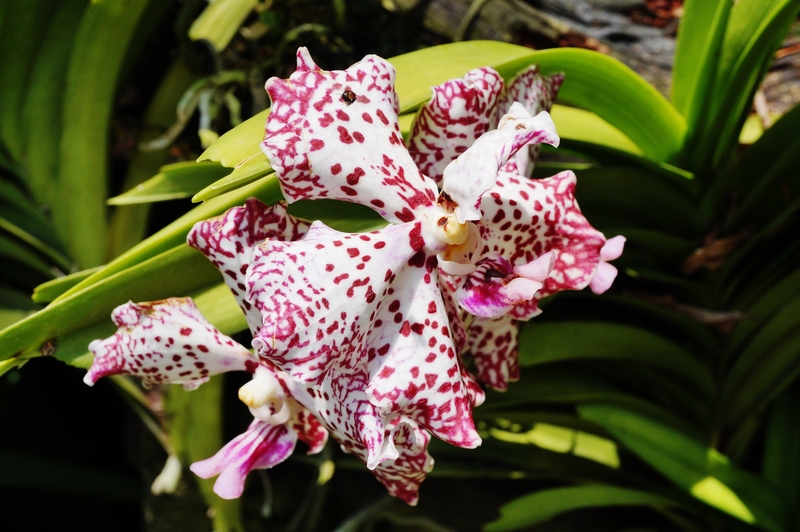Exploring the Benefits of Vertical Gardening
Posted on 29/05/2025
Exploring the Benefits of Vertical Gardening
Vertical gardening has rapidly gained popularity among urban dwellers, suburban homeowners, and even rural gardeners. As green spaces shrink and more people seek ways to beautify their living environments sustainably, vertical gardens offer a creative and practical solution for growing plants upward rather than outward. In this comprehensive guide, we will delve into the multifaceted benefits of vertical gardening, discuss the reasons behind its rising trend, and offer actionable tips for anyone looking to get started.

What is Vertical Gardening?
Vertical gardening, sometimes known as living walls or green walls, refers to methods of cultivating plants on vertically suspended panels or structures. Instead of spreading across the ground, these gardens grow upwards using trellises, shelves, stacked containers, or even specially designed vertical planters. This practice is not only visually striking but also environmentally responsible and highly efficient.
Key Benefits of Vertical Gardening
1. Maximizing Limited Space
Perhaps the most significant advantage of vertical garden setups is their ability to make efficient use of limited space. Modern urban living often means smaller yards or apartments with little to no outdoor soil. Vertical gardens take advantage of unused vertical spaces--walls, fences, balconies, or even interiors--transforming them into lush, productive areas.
- Ideal for Small Spaces: Apartments, condominiums, and tiny homes can easily incorporate vertical gardens on balconies or windowsills.
- Expand Growing Capacity: Homeowners can increase the number of plants in a given area.
- Utilize Unused Areas: Enhance garages, fences, patios, and interiors with green life.
2. Improving Air Quality
It's well-documented that plants purify the air by absorbing pollutants and releasing fresh oxygen. A rich vertical gardening system can significantly impact your immediate environment. Interior green walls are especially valuable in urban settings with persistent air quality issues.
- Natural Air Filters: Plants in vertical gardens remove carbon dioxide, formaldehyde, benzene, and other toxins.
- Increased Oxygen Levels: Multiple tiers of greenery produce more oxygen, making indoor spaces healthier.
- Reduces Allergens: Certain plants help trap dust and allergens that irritate sensitive respiratory systems.
3. Boosting Aesthetic Appeal
A well-designed vertical garden offers unrivaled visual interest, transforming bland walls into living art. Whether you opt for a vibrant mix of flowers, ferns, and trailing vines, or a minimalist arrangement of succulents and moss, vertical gardens add depth, texture, and color to any environment.
- Instant Curb Appeal: Dramatic green walls enhance the beauty and value of homes and businesses.
- Personal Expression: Customize vertical garden planters to showcase your favorite plant varieties.
- Year-Round Beauty: Evergreens and hardy plants provide structure and interest for all seasons.
4. Enhancing Mental Well-being
Numerous studies have shown that proximity to plants and greenery can reduce stress, boost focus, and enhance mood. By incorporating a vertical garden into your living or working space, you're investing in improved mental health and happiness.
- Stress Reduction: Greenery helps lower cortisol levels and promotes relaxation.
- Creativity and Productivity: Workspaces with living walls often see rises in staff morale and performance.
- Therapeutic Benefits: Gardening itself is a soothing hobby linked to lower rates of depression.
5. Increased Crop Yield in Small Areas
One of the primary vertical gardening advantages for food growers is higher yields per square foot. By using upward space, you can successfully cultivate herbs, vegetables, and even berries in areas that would otherwise be underutilized.
- Higher Plant Density: More crops in less ground space.
- Easy Access: Harvesting and maintenance are simpler since plants are at various, convenient heights.
- Diverse Plant Choices: Grow culinary herbs, leafy greens, strawberries, tomatoes, and more.
6. Natural Insulation and Energy Savings
Vertical gardening can also offer functional benefits for homes and buildings. Dense, well-placed green walls serve as natural insulation, helping to moderate indoor temperatures and reduce energy consumption.
- Cooler Summers: Living walls absorb sunlight, keeping interiors shaded and reducing air-conditioning needs.
- Warmer Winters: External vertical gardens add an extra layer, decreasing heat loss through building walls.
- Noise Reduction: The added plant mass absorbs and dampens outdoor noise, making your home or office quieter.
7. Promoting Biodiversity
Urban expansion often leads to habitat loss for local pollinators and beneficial insects. Integrating vertical planting systems reintroduces vital green pockets and attracts birds, bees, butterflies, and other wildlife.
- Food Source for Pollinators: Flowering vertical gardens provide nectar and pollen.
- Wildlife Habitats: Dense plantings offer shelter for small creatures.
- Healthy Ecosystems: Supporting pollinators boosts food production and strengthens local environments.
Types of Vertical Gardening Methods
There are several techniques for building a vertical garden, each catering to different needs, skills, and budget levels. Here are some of the most popular methods:
- Trellises and Arbors: Support climbing plants like beans, peas, or flowering vines.
- Wall Planters: Modular pocket systems or racks that hang on fences or walls to house individual plants.
- Stacked Containers: Pots or crates arranged in towers to maximize growing space.
- Hydroponic Towers: Soilless systems with nutrient solutions, perfect for productive kitchen gardens.
- Pallet Gardens: Recycled pallets fitted with landscaping material and soil for an eco-friendly vertical garden.
- Living Walls: Professional installations on building exteriors or interiors for spectacular impact and sustainability.
Key Plants for Vertical Gardens
Choosing suitable plants is crucial for healthy, thriving vertical gardens. Think about sunlight, water requirements, and desired effect--whether you want an edible garden, a floral showcase, or a lush, leafy display.
- Edible Plants: Herbs (basil, mint, chives, parsley), lettuce, spinach, strawberries, cherry tomatoes, peppers.
- Ornamental Plants: Ferns, philodendrons, pothos, succulents, begonias, impatiens, trailing petunias.
- Air-Purifying Plants: Spider plants, snake plants, English ivy, peace lilies.
- Pollinator Favorites: Lavender, salvia, zinnias, nasturtiums, alyssum.
Tips for Successful Vertical Gardening
To reap the full benefits of vertical gardening, proper planning and maintenance are key. Keep these tips in mind:
- Assess Light Conditions: Match plant choices to available sunlight (full sun, part shade, full shade).
- Watering Challenges: Vertical structures may dry out faster -- consider drip irrigation or self-watering systems.
- Weight and Stability: Use strong supports and lightweight soil mixes to prevent overloading walls or fences.
- Start Small: Begin with a manageable project and expand as you gain confidence.
- Regular Maintenance: Prune, water, and fertilize as needed. Check for pests and diseases regularly.
Sustainable and Eco-Friendly Gardening Solutions
Vertical gardening is inherently eco-friendly--it conserves space, recycles materials, and supports biodiversity. Here's how you can make your vertical garden even more sustainable:
- Reuse and Upcycle: Convert old pallets, rain gutters, or plastic bottles into planters.
- Organic Practices: Avoid chemical fertilizers and pesticides; use compost and natural pest control.
- Rainwater Harvesting: Collect and use rainwater for irrigating your garden.
- Grow Native Plants: Native species require less water and attract local pollinators.
Vertical Gardening for Urban Agriculture
As cities strive for sustainability and food security, urban vertical gardening has become a major trend. Rooftops, community centers, schools, and offices are implementing vertical farms to supply fresh produce, reduce food miles, and foster community engagement.
- Improved Food Access: Fresh vegetables and herbs can be grown within city limits, reducing reliance on imported goods.
- Community Empowerment: Shared vertical gardens bring people together, providing education and healthy food options.
- Greener Cities: Widespread adoption of vertical gardens can mitigate urban heat and pollution, creating healthier, more beautiful urban environments.

Challenges and Solutions in Vertical Gardening
Like any gardening system, vertical gardening has its own set of challenges. However, with careful planning, most issues are easily overcome.
- Watering Difficulties: Automated watering systems such as drip irrigation can help maintain consistent moisture.
- Structural Integrity: Use lightweight growing media and ensure secure mounting systems.
- Plant Selection: Choose species that thrive in vertical arrangements and monitor for overcrowding.
- Nutrient Deficiencies: Regularly supplement with organic fertilizers suitable for vertical setups.
Conclusion: Unlocking the Full Potential of Vertical Gardening
To sum up, the benefits of vertical gardening are clear--from maximizing small spaces and improving air quality, to fostering biodiversity and enhancing mental well-being. Whether you are a passionate gardener, an eco-conscious homeowner, or a city dweller with limited space, vertical gardens provide both practical and aesthetic rewards.
By following best practices for design, plant selection, watering, and maintenance, anyone can enjoy the versatility and beauty of vertical gardening. Start with a small project and discover how this innovative approach can transform your environment, support healthy living, and contribute to a greener planet.
Ready to explore the world of vertical gardening? Begin your vertical garden journey today and experience the limitless possibilities that growing upward can offer!

